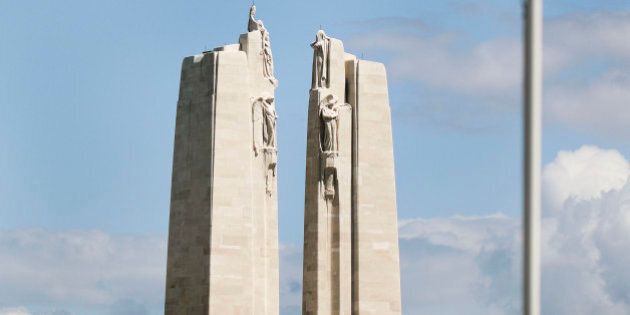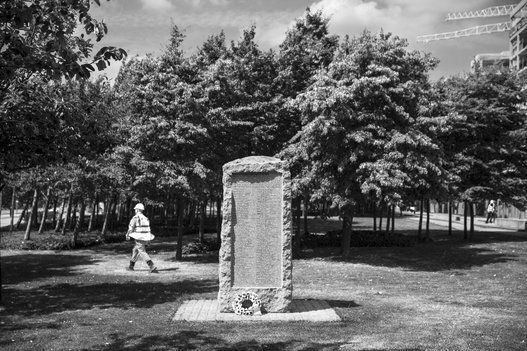
There are cemeteries, burial plots, museums, and memorials all over the world that honour our Canadian Forces. If you're travelling overseas, here are a few international sites where you can pay your respects on November 11 or any day of the year:
Vimy Ridge (France)
In the early hours of Easter Monday in 1917, approximately 15,000 Canadian soldiers rose from the trenches and advanced towards Vimy Ridge. After four bloody days, the Canadians captured most of the ridge on April 12, 1917. Some consider this to be a defining moment in Canadian history.
In July 1936, the Vimy Memorial was unveiled in France, and is Canada's largest overseas national memorial. Towering over the scene of the battle, the Vimy Memorial is inscribed with the names of 11,285 Canadians who were killed on French soil and have no known graves. When visiting the memorial, take at least half a day to see the entire site.
El Alamein Memorial (Egypt)
Roughly 100 kilometres west of Alexandria, you can pay respects to the 213 Canadian airmen who served across the Middle East during World War II. It's located in the desert, but beds of roses bloom at the monument, fed by reservoirs.
Canadian Korean War Memorial Garden (Republic of Korea)
Just below the hills defended by Canadian Forces in the 1951 Battle of Kapyong, a garden memorial honours 26,000 Canadians who served during the Korean War. Of these, 516 died and 1,255 were wounded.
Mr. Chi Kap Chong, a retired Korean journalist and former member of the Korean National Assembly, selected the site and raised funds to purchase the land for the memorial. A stone tablet with three panels in Korean, English and French lists the units of the Canadian Forces that participated in the Korea War. As a living memorial, Canadian organizations award annual scholarships to Korean students of the Kapyong Buk Middle School, who act as caretakers for the memorial park.
The Man with Two Hats (The Netherlands)
In the City of Apeldoorn, there's a bronze statue of a man with outstretched arms, grasping two matching hats. This monument is a gift from the Netherlands and pays tribute to Canada's role in the liberating Holland during World War II. An identical statue resides in Ottawa and the hats symbolize solidarity between the two countries.
Kanchanaburi War Cemetery (Thailand)
While occupying Thailand during World War II, the Japanese forced 100,000 prisoners of war and Asian labourers to build the Thailand-Burma railway. They endured brutal conditions and more than half died of starvation, exhaustion, disease and cruelty.
There are 6,982 former POWs buried in Kanchanaburi War Memorial Cemetery, mostly Australian, British and Dutch. But if you look carefully, there are a handful of Canadian graves among the thousands.
Juno Beach Centre (France)
Partly a museum dedicated to the landings on D-Day, the Juno Beach Centre on the Normandy Coast is a place of memory to honour Canada's participation in World War II and the liberation of Western Europe. More than one million Canadians were mobilized during the war. The Centre was constructed by the Juno Beach Centre Association, a group of World War II veterans who participated in the D-Day landings and the subsequent battles in Normandy and Western Europe.
Sai Wan Memorial (Hong Kong)
Less than eight hours after the attack on Pearl Harbor, Japanese forces invaded the former British colony of Hong Kong. Commonwealth forces -- mainly British and Canadian -- defended the territory, until the British surrendered Hong Kong on Christmas Day, 1941.
The Sai Wan Memorial honours the Allied soldiers who defended Hong Kong, and overlooks the military cemetery where the majority of the fallen are now interred. Of the 2,071 names, 228 are Canadian.
This is an abbreviated version of the original article, which appears in Eat Drink Travel Magazine. For the full article with photographs, click here.
MORE ON HUFFPOST:
